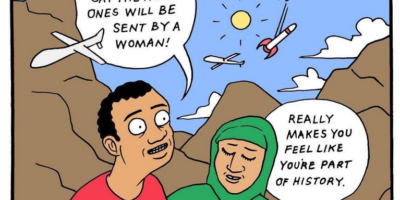Collective Cinephilia
By Michael Dean Benton
The first film in the Collective Cinephilia series I have chosen to review is Criterion’s new release of the British visual artist Steve McQueen’s 2008 debut film Hunger. The high-quality Criterion DVD edition and the superb extras accompanying this release make for an outstanding viewing experience.
The film depicts the 1981 Irish hunger strike by IRA prisoners in the notorious Maze Prison. Ostensibly, the film portrays the buildup to the hunger strike from Margaret Thatcher’s declaration that IRA prisoners would no longer receive “political” status during their incarceration; instead, they would henceforth be treated as “criminals.”
Resisting the general impulse to center the film immediately on the traditional hero of the story, Bobby Sands, the IRA leader and first martyr of the hunger strike, McQueen instead develops the stories of separate characters and vividly brings to life the tense environment of the Maze and its inhabitants—both guards and prisoners.
In a master class of subtle, intelligent filmmaking McQueen starts off following the daily ritual of prison guard Raymond Lohan as he gets ready for work at the Maze, including looking under his car for a bomb before starting it while his wife looks fearfully out the window. Lohan is a walking time-bomb of desperation and rage. McQueen provides visual set pieces of his isolation amongst his fellow officers, his solitary smoking in the cold outdoors, and his ritual cleaning of his bloodied knuckles.
Lohan does not come off as sympathetic character in that we see him repeatedly engaging in brutal acts against the Irish prisoners as retaliation for their resistance and protests. However, the characterization of Lohan does transcend the stock cartoonish nature of evil guards in films like The Shawshank Redemption. Hundreds of prison guards were murdered by both sides of the conflict in Northern Ireland. The film vividly depicts the reality of their charged situation; at the same time, the film calls to mind the conclusions of the Stanford Prison Experiment that brutality is inherent in the powerful position of the guard, who preemptively feel the need to enforce complete compliance in order to provide the (in)security of a docile population.
The next section follows a new prisoner, Davey, who is quickly labeled a “non-conforming” prisoner and who is locked in a cell with Gerry. The two prisoners engage in the IRA prisoner protests of refusal to wash, refusal to wear prison uniforms (they wear a single blanket), and most dramatically, covering the walls artistically with their feces and food remains. The confrontations of the prisoners and guards are stunning scenes and fiercely depict the struggle between these forces. This may be some of the most difficult scenes I have seen lately, simply because of the realistic portrayal of the violence. Celebrated shocking films like Hostel or Inglourious Basterds can’t compete with this kind of intensity, because they are escapist in nature, and Hunger does not seek to escape the brutal nature of these struggles between guards and prisoners.
Surprisingly, it is not until the 25 minute point in the film, during a dramatic, violent, riot police disciplining of the prisoners that the traditional protagonist/hero/villain (depending on one’s view) of this story, Bobby Sands, appears. Up until this point we have experienced a visual and aural depiction, but rarely have we heard anyone speak. Slowly the film begins to introduce more dialogue, until, in one of the most amazing set pieces, in a film of brilliant scenes, at the half-way point of the film, Sands talks combatively to a contentious priest for 22 minutes about the initiation of the IRA hunger strike. Once again, this is a masterful scene with two brilliant actors that completely emphasizes the seriousness of this decision as well as the differing positions concerning the proposed hunger strike.
The end of the film follows the ensuing decision to carry out the hunger strike and the agonizing disintegration of Bobby Sands. Michael Fassbender, in a career moment, turns his body into a cinematic tool for portraying Sands determined hunger strike. Through his disciplined diet of 600-1000 calories a day over 10 weeks, Fassbender lost weight for the role, but it is in his carefully measured, agonizing movements that he most vividly depicts the implications of Sands’ actions.
The film has been condemned by critics from all sections of the political spectrum in the UK/Ireland. Some criticize the portrayal of the guards as too humanizing, some complain that the prisoners are glorified in their political struggle, and some believe that McQueen is wrongly questioning Sands’ motivations for initiating the hunger strike. For me, this demonstrates the multi-layered vision McQueen brings to this historical moment. Many critics around the world agreed and put the film in their lists of the top films of 2008. To truly appreciate this film, I recommend a viewing of the intelligent discussions of the director/actors about making the film and the contemporaneous BBC documentary “The Provo’s Last Card” on the hunger strikes.
It has been announced that McQueen’s next film will be on the Nigerian musician-activist Fela Kuti.
(Currently the DVD is unavailable in local rental stores, but you can request that they provide it for rent. It is available locally for purchase and you can rent it online through DVD services like Netflix. In the spirit of “collective cinephilia” I look forward to comments about this review and/or the film.)



1 Pingback